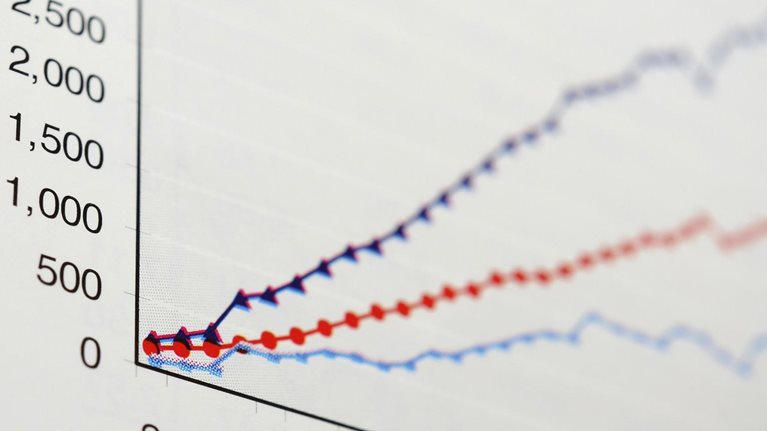Of all the measures of a company’s performance, its earnings per share (EPS) may be the most visible. It’s quite literally the “bottom line” on a company’s income statement. It’s the number that business journalists focus on more often than any other, and it’s usually the first or second item in any company press release about quarterly or annual performance. It’s also often a key factor in executive compensation.
But for all the attention EPS receives, it is highly overrated as a barometer of value creation. In fact, over the past ten years, 36 percent of large companies with higher-than-average EPS under-performed on average total return to shareholders (TRS). And while it’s true that EPS growth and shareholder returns are strongly correlated, executives and naïve investors sometimes take that relationship too seriously. If improving EPS is good, they assume, then companies should increase it by any means possible.
The fallacy is believing that anything that improves EPS will have the same effect on value creation and TRS. On the contrary, the factors that most influence EPS—revenue growth, margin improvement, and share repurchases—actually affect value creation differently. Revenue growth, for example, can increase TRS as long as the organic investments or acquisitions behind it earn more than their cost of capital. Margin improvements, by cutting costs, for instance, can increase TRS as long as they don’t impede future growth by cutting essential investments in research and development or marketing.
For example, to improve EPS, managers at one company committed to an aggressive share-buyback program after several years of disappointing growth in net income. Five years later, managers had retired about a fifth of the company’s outstanding shares, increasing its EPS by more than 8 percent. Yet the company was merely retiring shares faster than net income was falling. Investors could see that the company’s underlying performance hadn’t changed, and the company’s share price dropped by 40 percent relative to the market index.
Share repurchases seldom have any lasting effect on TRS—and that often comes as a surprise to managers and investors alike. Given how often we hear executives advocate share repurchases because of their effect on EPS—and make the occasional argument for taking on debt to execute them—it is worth exploring the relationship between buybacks, EPS, and shareholder returns. We’ll begin by examining the empirical evidence and then look at the logic behind so many decisions to repurchase shares.
Misguided math
Companies that repurchase shares when prices are low can create value for those shareholders who don’t sell if the share price rises as a result. As our prior research has found, however, most companies don’t time these purchases well.1 Rather, we find that many executives have come to believe that share repurchases create value just by increasing EPS. The logic seems to be that earnings across a smaller number of shares mathematically increases EPS, and if EPS increases and the price-to-earnings (P/E) ratio stays constant, then a company’s share price must increase.

Would you like to learn more about our Strategy & Corporate Finance Practice?
The empirical evidence disproves this. For while there appears to be a correlation between TRS and EPS growth, little of that is due to share repurchases. Much of it can be attributed to revenue and total earnings growth—and especially to return on invested capital (ROIC), which determines how much cash flow a company generates for a given dollar of income. All else being equal, a company with higher ROIC will generate more cash flow than a similar company with lower ROIC. But without the contribution of growth and ROIC to TRS, there is no relationship between TRS and the intensity of a company’s share repurchases (Exhibit 1).2

That’s because it’s the generation of cash flow that creates value, regardless of how that cash is distributed to shareholders. So share repurchases are just a reflection of how much cash flow a company generates. The greater the cash flow, the more of it a company will eventually need to return to shareholders as dividends and share repurchases.
The error in valuing repurchases in isolation
The idea that share repurchases create value by increasing EPS also errs in its failure to consider other possible uses of the cash, such as paying dividends, repaying debt, increasing cash balances, or investing in new growth opportunities. What matters is the effect of a share repurchase relative to those other actions, not the effect of the repurchase on its own.
Repurchase versus dividend
Consider the effect of a hypothetical company using cash to repurchase shares relative to using it to pay an equivalent dividend. The company earns $100, has a P/E ratio of 15, and makes no investments, so managers can distribute the earnings as dividends or as share repurchases (Exhibit 2).

If the company pays out its earnings as dividends, its value will be $1,500. Shareholders will also have received $100, so the total value to the share-holders is $1,600. On a per-share basis, the share price will be $15. Since each share will also have received $1 in dividends, the total value and cash per share will be $16.
If the company pays out its earnings by repurchasing shares, its total value will remain the same, $1,500, and shareholders as a whole will have received the same amount of cash, $100. On a per-share basis, for those shareholders who don’t sell, each remaining share will increase in value to $16 because the earnings are now divided by a smaller number of shares. For an individual share, this is economically equivalent to having a share worth $15 plus cash of $1 from a dividend.
The mechanical effect on EPS is irrelevant. If the company pays a dividend, shareholders retain their shares and receive cash. If the company repurchases shares, the selling shareholders receive cash and the remaining shareholders have shares with higher value (but they don’t receive any cash). Overall, there is no change in value, just a change in the mix of shareholders.
Repurchase versus debt reduction
Comparing the effect of using cash to repurchase shares with using it to pay down debt is more complex. The reason is that when the company pays down debt, its capital structure, cost of capital, and P/E ratio change. Yet because the enterprise value of the company stays the same, so does the value to shareholders.
In this comparison, suppose our hypothetical company has $200 of debt in the base year (Exhibit 3). In that base year, the company’s enterprise value is $1,500 and its equity value is $1,300. Note that the enterprise value divided by after-tax operating profits is now different from the P/E ratio, at 15.0 and 13.8 times, respectively. The P/E ratio is lower because the higher leverage increases the riskiness of the equity, leading to a higher cost of equity.

If the company repurchases shares, the enterprise value and equity remain the same as in the base year. In addition, shareholders receive $100 in share repurchases, so collectively, the shareholders will have $1,300 in equity value plus $100 of cash, for a total of $1,400. The remaining shares outstanding will be worth $14 per share.
If the company pays down debt instead, the enterprise value remains the same, but the equity value increases by $100. Note that the enterprise value doesn’t change because the operating cash flows of the company have not changed. However, the value of the equity increases by the amount of cash retained and used to pay down debt. The value of the company to all the shareholders is the same as the sum of equity value and cash distributed in the share repurchase, or $1,400.

A better way to understand internal rate of return
The equity value of $1,400 divided by a net income of $97 produces a P/E ratio of 14.4. Note that the P/E ratio in the base year, as well as in the share-repurchase scenario, was lower, at 13.8. The increase in the P/E ratio is due to the declining leverage, leading to less risky equity and a lower cost of equity.
On a per-share basis, repurchasing shares increases EPS, in this case from $0.94 to $1.01, but the increase in EPS is offset by the lower P/E ratio relative to the scenario of paying down debt. On the off chance that a company might borrow cash to repurchase shares, for example, it would increase a company’s EPS because the effect of reducing the share count is larger than the reduction in net income due to additional interest expense. However, with its increased debt, the company’s equity would be riskier and, all else being equal, its P/E ratio would decline—offsetting the increase in EPS.
Repurchase versus investing
Finally, consider what happens when, instead of repurchasing shares, our hypothetical company invests that same amount of cash, $100, back in the business. Assuming it earns a return of 15 percent, which exceeds its cost of capital, its income would increase by $15 (Exhibit 4).3

Assuming the enterprise-value multiple remains constant at 15 times, the enterprise value and equity value will increase to $1,725—which is more than the sum of the equity value and the cash paid out in the share-repurchase case. The EPS is also higher in the investment case.
Investing at an attractive return on capital will always create more value than repurchasing shares, but it doesn’t always do so as quickly. In this simple example, we’ve assumed that the company earned an immediate 15 percent return on its investment. That’s often not realistic, since there will be a lag between when a company invests and when it realizes a return. For example, if the company didn’t earn a return until year three, its EPS for the first two years would be higher from share repurchases than it would be from investing. This explains the temptation to repurchase shares instead of investing. With a share repurchase, the effect on EPS is immediate, and with investing, it is delayed. Disciplined managers won’t fall for the short-term benefit at the expense of long-term value creation.
Improving a company’s earnings per share can improve its return to shareholders. But the contribution of share repurchases is virtually nil.


